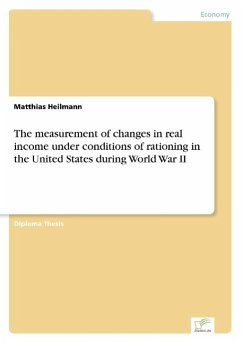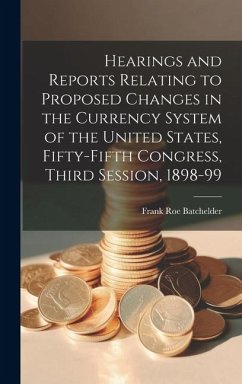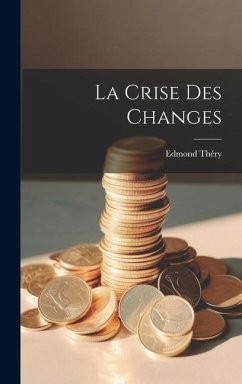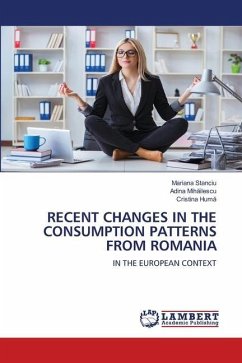
The measurement of changes in real income under conditions of rationing in the United States during World War II
Versandkostenfrei!
Versandfertig in 1-2 Wochen
74,00 €
inkl. MwSt.

PAYBACK Punkte
0 °P sammeln!
Inhaltsangabe:Abtract: During World War II, the private customers in the United States were confronted with conditions of rationing concerning several consumer goods. The government regulated the allocation of those goods, for example oil, leather, and grain, particularly with regard to their fitness to fight. The U.S. army was preferred to receive such goods instead of giving them to the citizens. Therefore, people had to optimize their consumption decisions with respect to both their budget constraint and rationing of goods. Under the assumption that the households' preferences didn't change...
Inhaltsangabe:Abtract: During World War II, the private customers in the United States were confronted with conditions of rationing concerning several consumer goods. The government regulated the allocation of those goods, for example oil, leather, and grain, particularly with regard to their fitness to fight. The U.S. army was preferred to receive such goods instead of giving them to the citizens. Therefore, people had to optimize their consumption decisions with respect to both their budget constraint and rationing of goods. Under the assumption that the households' preferences didn't change during World War II, one major trouble exists from the point of view of index number theory. Because of rationing, the prices of such goods usually change in contrast to a market economy, where the allocation of goods is presumed to be efficient, given prices which cannot be affected by the households consumption. Therefore the actual consumption of any given customer under conditions of quantity constraints need not be optimum with respect to his money outlay and the existing price system. In spite of rationing, the households optimize their utility from consumption given their money expenditures and the price system. Based on this relative strong assumption, one has to estimate a price system, which helps to measure changes in real income under such conditions of rationing. The central idea to solve that problem was introduced by Erwin Rothbarth (1941), who assumed that the quantities consumed under rationing were the same quantities consumed by households in an open market economy to receive their optimum. Rothbarth called such an estimated price system a _virtual price system_, which allowed him to work with the common index number theory. Such a virtual price system makes the quantities consumed under rationing a consumption optimum, i.e. the maximum level of utility, of the private customers. Rothbarth's method will be used in this article to estimate deflators, which will help to unlock changes in real income conditional on quantity constraints. First, I will give an overview of the U.S. economy in chapter 2. After having done that, I will present several aspects concerning the calculation of a Rothbarian ?virtual price system?. Thereby, it will be important to build an opinion about the preferences of the private households, which will be expressed as a generalized Cobb-Douglas demand system. Based upon that demand system an estimation equation for [¿]










![The Tariff Hand-book [microform]: Shewing the Canadian Customs Tariff With the Various Changes Made During the Last Thirty Years: Also the British and Cover The Tariff Hand-book [microform]: Shewing the Canadian Customs Tariff With the Various Changes Made During the Last Thirty Years: Also the British and](https://bilder.buecher.de/produkte/65/65513/65513646n.jpg)



